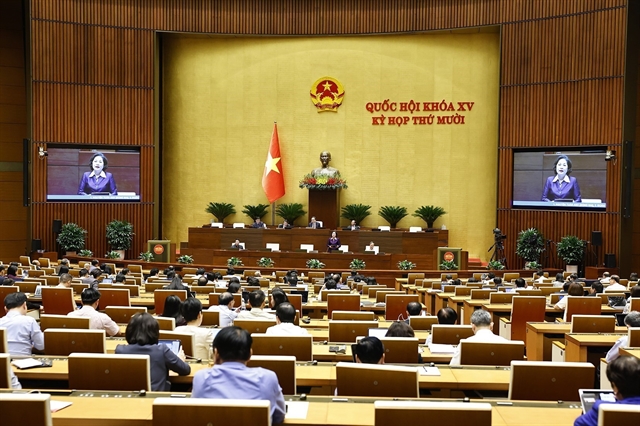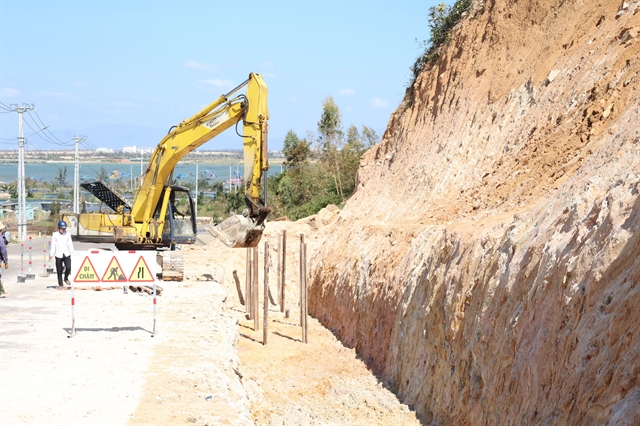.jfif) Opinion
Opinion
.jpg)
.jpg) |
| Lê Trung Hiếu, deputy director of the Hà Nội Department of Finance. Photo Phạm Hùng |
Hà Nội faces the dual challenge of tackling chronic traffic congestion and developing a greener, more integrated and sustainable transport system, as the capital pushes towards becoming a modern multi-centred city. Lê Trung Hiếu, deputy director of the Hà Nội Department of Finance, spoke to Kinh Tế & Đô Thị (Economic and Urban Affairs) about building the capital’s future under a model that aims to boost efficiency, ease pressure on the urban core, and support long-term growth.
What kind of transport strategy does Hà Nội need to meet current development demands?
Hà Nội stands at a historic turning point in its urban development, facing a dual challenge of upgrading its transportation system to match its role as the nation’s economic and social growth engine while restructuring itself into a multi-centred, high-efficiency city.
To achieve these goals, the city needs, and is already implementing, a comprehensive transport development strategy.
Never before has Hà Nội embarked on such an intensive phase of transport infrastructure development, with a range of mega-projects including the high-speed railway, the urban railway network and the Hồng (Red) River landscape avenue.
These demonstrate the city’s long-term strategic vision and strong determination to build a modern high-capacity transport system as a foundation for sustainable development.
 |
| A corner of Ring Road 3 in Hà Nội. VNA/VNS Photo Quốc Khánh |
What are the key highlights determining the success of this strategy?
Hà Nội’s transport development objectives can be summarised as three core pillars: interregional connectivity, internal connectivity and the green transport transition.
Among the key highlights is the North–South high-speed railway project, which is expected to be a major driver of socio-economic and scientific development nationwide, particularly benefiting Hà Nội and HCM City.
To implement this project, Hà Nội has planned the Ngọc Hồi Station complex, integrating the high-speed railway, the urban railway and road transport.
This hub is designed to become a commercial, service and logistics nucleus in the southern area of the capital, mirroring the economic breakthrough potential seen in Thủ Thiêm, HCM City.
The city is also advancing strategically vital interregional projects such as Ring Road 4 (Capital Region) and Gia Bình Airport. These are both critical to regional connectivity.
Internally, the city is implementing a comprehensive urban railway master plan and a traffic congestion reduction scheme, which are long-term initiatives to transform the city’s transport system in both scale and quality.
A key goal is to fundamentally resolve congestion with the urban railway network playing a decisive role.
Can the urban railway system really solve traffic congestion and boost the city’s transport capacity?
Investment in the urban railway is only one component of a broader strategy.
To achieve comprehensive results, Hà Nội must simultaneously implement measures in traffic management, vehicle regulation, connectivity infrastructure and smart technologies.
Currently, public transport, mostly buses, accounts for only about 17–18 per cent of all trips.
The goal is to raise this to 45–50 per cent by 2035, driven primarily by the urban rail network.
However, the Cát Linh-Hà Đông line reveals the limitations caused by weak integration with other transport modes.
Despite high passenger density, the lack of feeder bus lanes, parking for bicycles and motorbikes and quality pedestrian access around stations reduces its overall effectiveness.
This is a key issue that must be resolved to unlock the full potential of the metro system.
Hà Nội should develop a dense network of high-frequency feeder buses running through densely populated residential areas and stop directly at urban railway stations.
At the same time, it is necessary to develop infrastructure for public bicycles and safe, shaded pedestrian pathways, especially within a 500-metre radius of each metro station.
Integrating spaces for shared vehicles such as electric motorbikes and mini electric cars at the stations is also an inevitable step to maximise convenience for commuters.
 |
| Public transport, mostly buses, accounts for only 17–18 per cent of transport services in Hà Nội. VNA/VNS Photo Tuyết Mai |
What additional measures should Hà Nội adopt to optimise its urban transport system?
Hà Nội needs to invest in intelligent transport systems and big-data-driven traffic management to redefine how its transport network operates.
Managing such a complex network requires a shift from static to real-time data-driven operations, integrating both road and rail systems.
Although the city already has a traffic control centre, data integration remains fragmented.
Signal control at major intersections still relies on outdated or fixed-timing systems, reducing throughput efficiency by an estimated 15–20 per cent.
The city should soon establish a smart urban traffic management centre capable of integrating multi-source data and optimising flow through AI-powered predictive algorithms.
This would not only improve throughput by up to 20 per cent but also lay the groundwork for transparent and fair electronic toll collection (ETC) in inner-city areas, providing a complete picture of urban mobility.
Controlling private vehicles requires clear, strong and transparent policy measures.
Technical and infrastructure solutions are temporary. Without policy tools to regulate demand, congestion will persist.
Vehicle management remains the only way to sustain efficient travel speeds in the city centre.
In the short term, completing Ring Road 4 and launching Ring Road 5 will play an important role in redistributing interregional traffic and easing inner-city pressure.
In the longer term, only when Hà Nội’s public transport share surpasses 30–35 per cent, thanks to early metro lines, will policies like restricting motorbikes in central areas post-2030 and imposing congestion charges become socially feasible.
Ultimately, the success of the urban railway network will be the key to maximising investment efficiency, eliminating chronic congestion and building a truly sustainable and livable capital.
Developing a modern high-capacity transport system will not only ease traffic but also reshape urban space, improve environmental quality and labour productivity and elevate Hà Nội to the stature of a leading capital in the region. VNS
.jpg)



